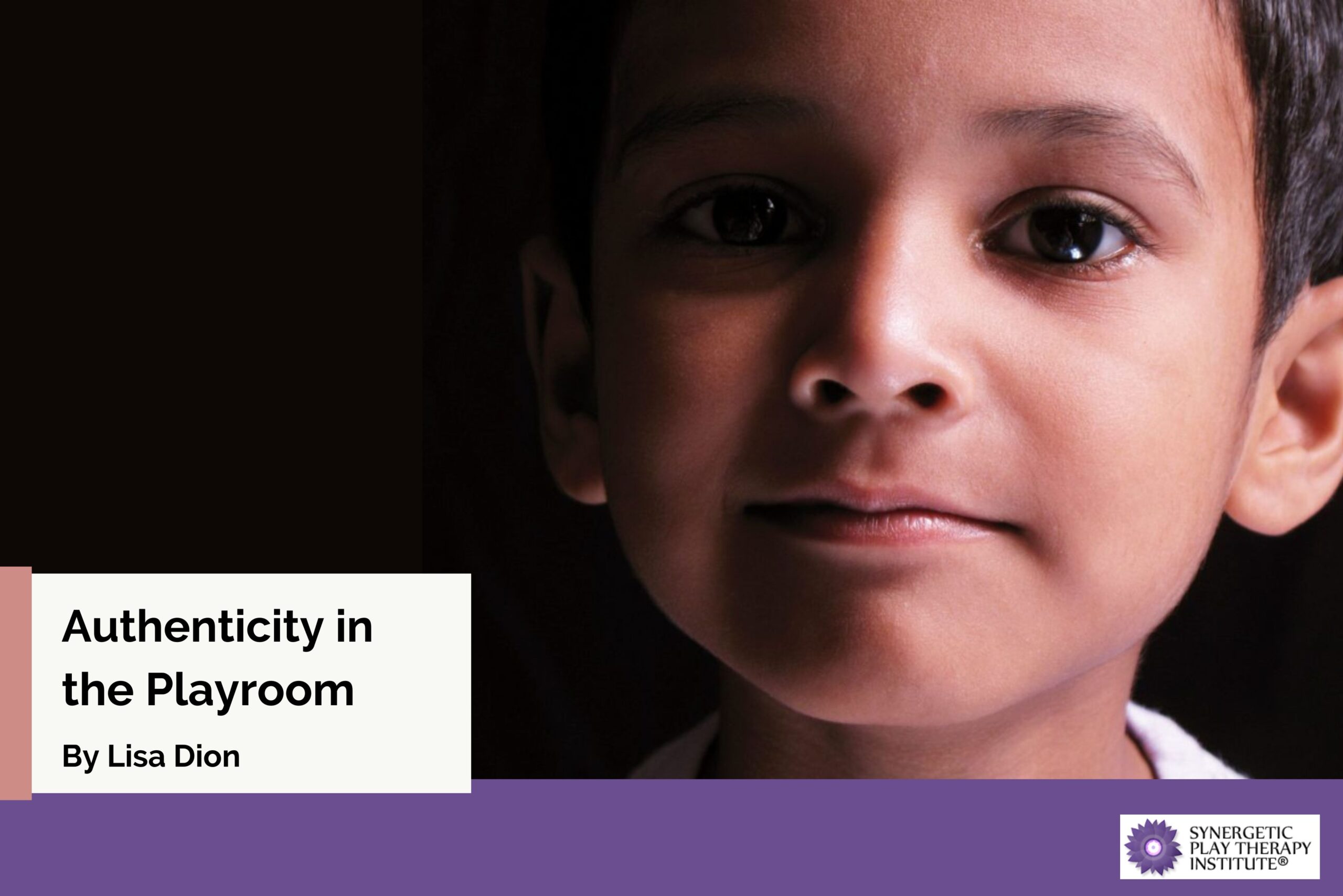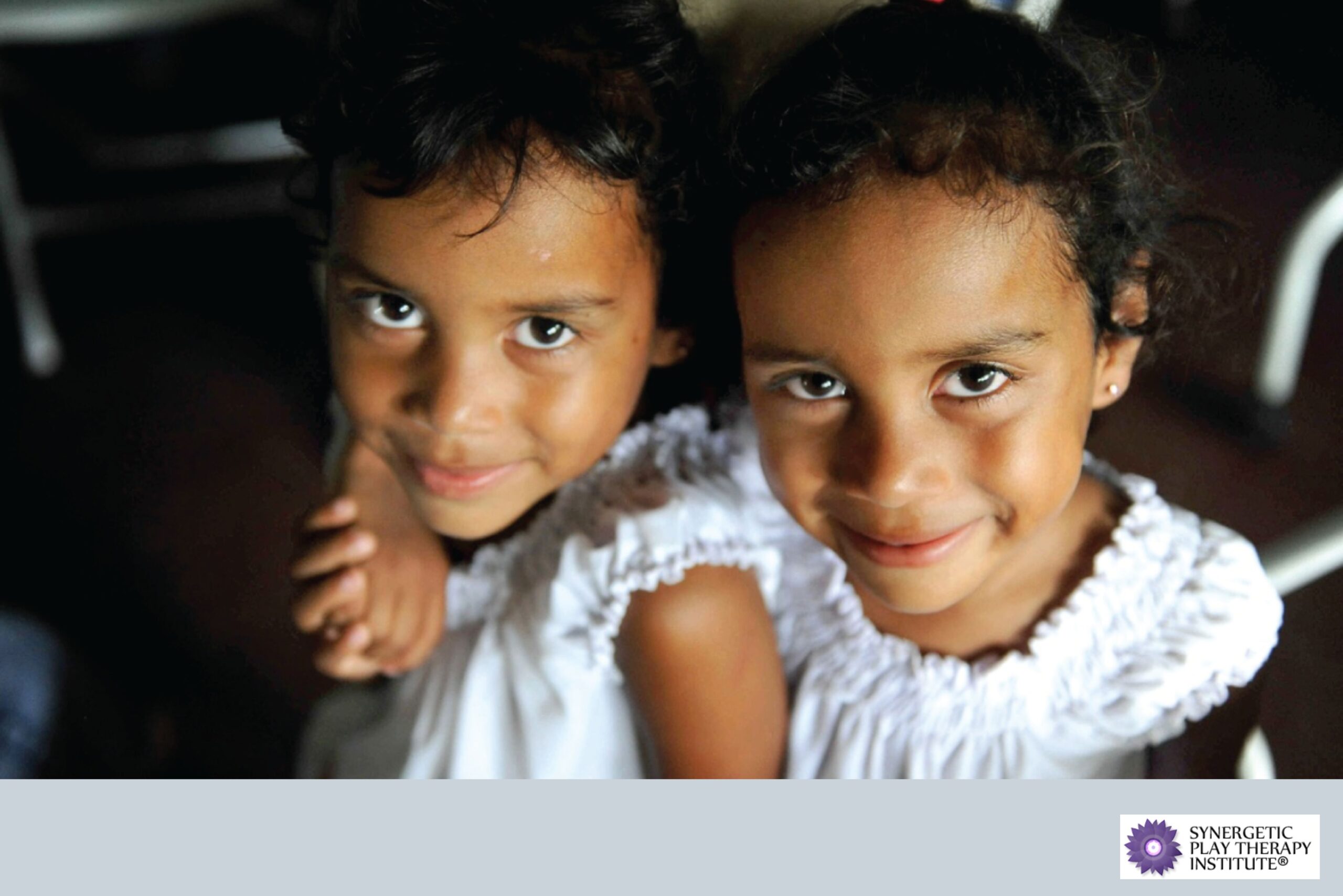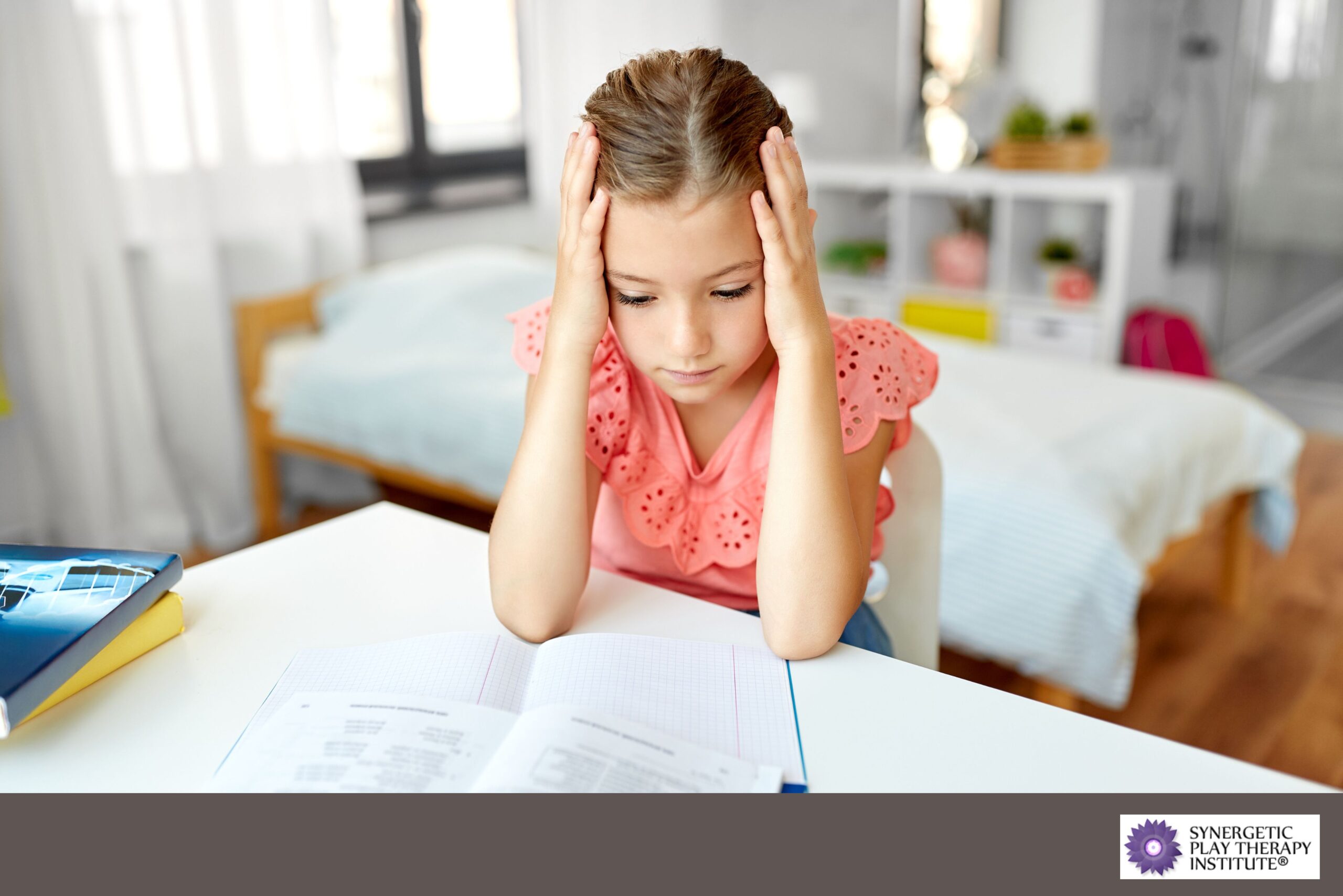By Lisa Dion, LPC, RPT-S
“I assure you that it’s okay to be yourself in the playroom. In fact, it’s necessary if you’re going to help a child regulate through intense play, because when we’re not willing to be authentic, the child will usually amp up the play to get us to have an authentic response. I have never seen a child damaged because the therapist was “real.” However, I have seen children who never deeply connected to their therapist and didn’t go as deep as they could have gone because their therapists were too scared to share and express their authentic experience congruently.” -Lisa Dion
“There’s a ghost behind you!” Jack* shouted
“I’m scared! I’m scared!” I said, putting my right hand on my heart and the other hand on my stomach. I exhaled loudly in an attempt to ground myself.
“And one over there, and another one over there,” he said, pointing to the corner of the room. “They are gonna hurt you!”
“I’m so scared. I don’t feel safe. I don’t have any protection,” I said while continuing to breathe and hold onto myself.
Jack rolled his blue eyes. “Whatever. We’re just playing.”
At five, Jack had already learned how to emotionally shut down, and he was trying to shut down my emotional expression, too. Jack came to me because his parents were concerned about his high levels of aggression and what they referred to as his “irrational fears.” During the intake with his mother, it was obvious she was frustrated with him and she felt and emotionally disconnected from herself. When I asked her how she felt about his anger and fears, she looked at me and bluntly said, “I don’t do anger.” She then went on to share that his obsession with ghosts was just too much for her.
In our first play session together, Jack set me up to feel an overwhelming sense of fear along with a clear message that it wasn’t okay for me to express my feelings. After Jack introduced the ghosts to play, he told me there were bad guys in the hallway that might enter our room at any second.
I allowed myself to feel and express an authentic response based on how I would actually feel if there were ghosts in the room and bad guys in the hallway. I also allowed myself to regulate throughout the hyper-arousal, because the hyper-vigilance was intense! Each time I expressed my fear, I noticed that I was placing one hand on my heart and the other on my stomach. I didn’t plan to do that. It was my body’s natural response. Each time I expressed fear, Jack made fun of me and tried to shut me down even though he was trying to scare me. He’d mock me, saying things like, “I’m never scared. I’m not scared of anything.” Yet he placed every toy gun, sword, shield, grenade and even a pair of handcuffs in front of the door just in case the bad guys got in.
Two sessions later, Jack and I were playing in the sand tray, and I saw him hide a plastic snake under the sand behind a boy figurine, and once again I felt the fear rise up inside me and once again I allowed myself to have an authentic reaction. “There’s that feeling inside me again,” I whispered hesitantly. “I feel scared, but I’m worried I can’t say it because I might get told I’m not allowed to be scared.”
Jack looked at me and stood up straight. “I get scared,” he announced. This was the first time he’d acknowledged his fear and not made fun of me.
I felt my body relax and I could feel the significance of the moment. I took a deep breath to hold the space for him. “You do?”
“Yes. I even know what to do when I get scared.”
“What do you do?” I asked, breathing deeply to hold this poignant moment.
“Watch,” he said as he put one hand on his heart and the other on his stomach and let out a long breath.
“It’s well-understood that children learn how to regulate their own emotions by watching and perceiving their caregivers’ responses. Children are able to learn through observation because of the mirror neuron system. It’s the ‘I feel what you feel’ emotional empathy system. We can use it to get in sync with other people’s emotions, by reading facial expressions and body language and intepreting tone of voice.” -Lisa Dion
*Name, gender and age changed to protect the identity of the child.






